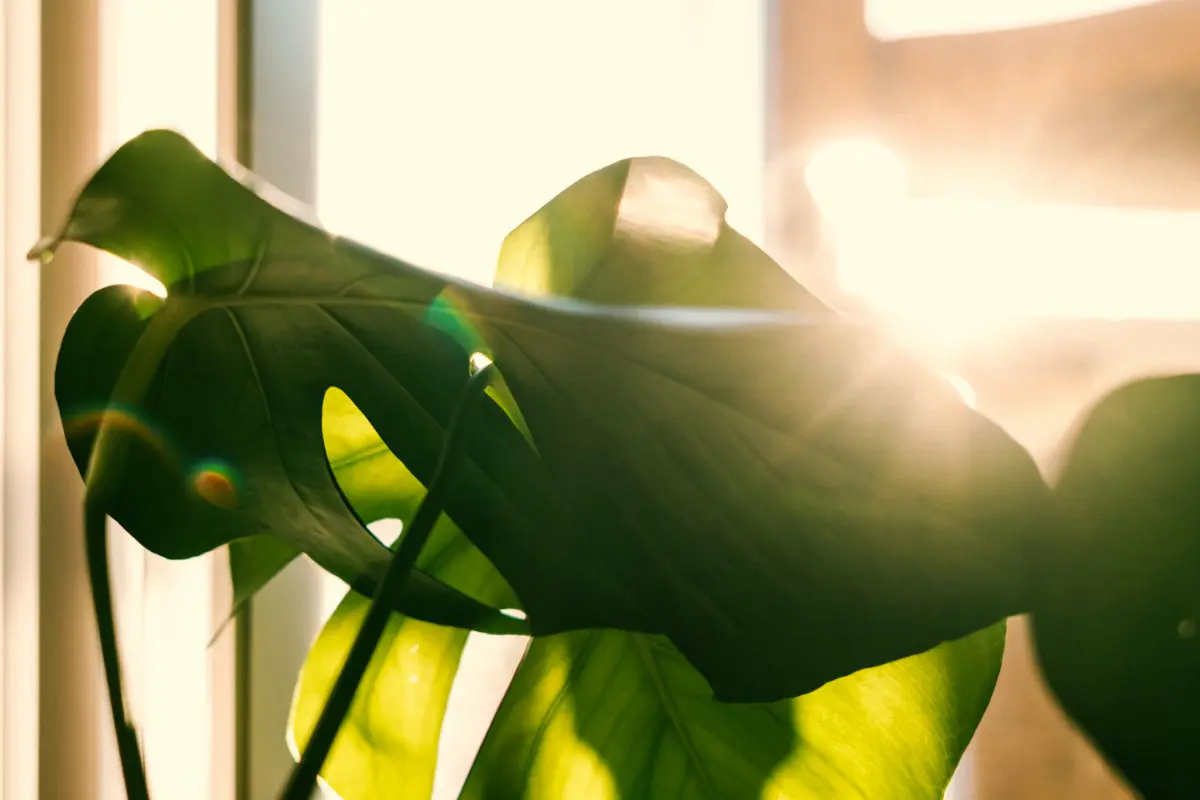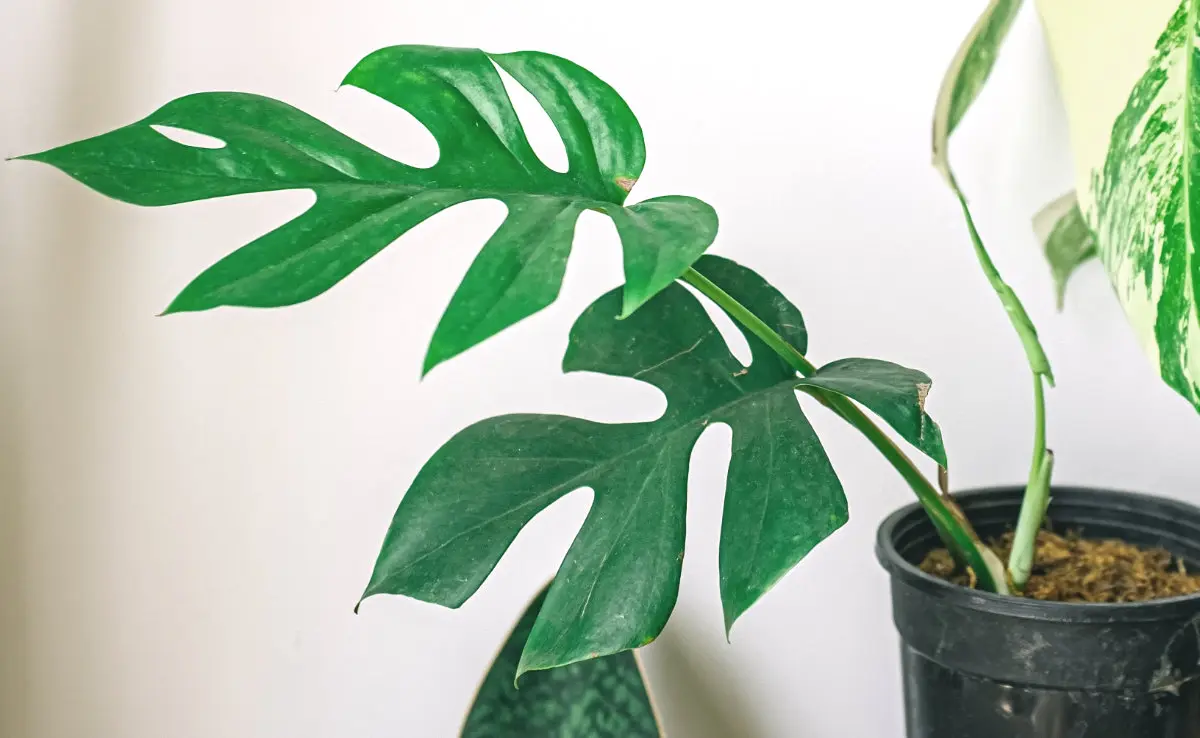Can Monstera Plants Live Outside?
Monstera plants can live outside, but it depends on the climate and growing conditions. Learn more about whether your Monstera will thrive outdoors.
By Tobias Holm
Monstera plants, with their iconic split leaves and tropical allure, have long been a staple in indoor gardening. But the question remains: can these beloved houseplants thrive in an outdoor environment?
The great debate among gardening enthusiasts continues, with passionate arguments on both sides. Proponents argue that monstera plants, with their natural habitat in the rainforests, are built to withstand the elements and flourish outdoors. They highlight the benefits of ample sunlight, fresh air, and natural rainfall, which can stimulate robust growth and vibrant foliage.
On the other hand, skeptics argue that monstera plants, accustomed to the controlled conditions of indoor environments, may struggle to adapt to the unpredictable nature of the great outdoors. They express concerns about potential damage from harsh weather conditions, pests, and diseases.
As the debate goes on, one thing is clear: the decision to take monstera plants outdoors requires careful consideration of various factors, including climate, location, and the plant's individual needs.
Join us as we delve into this captivating topic and explore the possibilities of growing monstera plants in the great outdoors.
Understanding the natural habitat of Monstera plants
To truly understand whether Monstera plants can survive and flourish outdoors, it's essential to delve into their natural habitat.
Monstera plants are native to the rainforests of Central and South America, where they thrive under the canopy of trees. In this environment, they receive filtered sunlight, high humidity, and consistent temperatures. These factors contribute to their lush foliage and vigorous growth.
Can Monstera plants survive outdoors?
The question of whether Monstera plants can survive outdoors is a complex one.
On one hand, proponents argue that Monstera plants, with their natural habitat in the rainforests, are built to withstand the elements and flourish outdoors. They highlight the benefits of ample sunlight, fresh air, and natural rainfall, which can stimulate robust growth and vibrant foliage. Monstera plants are known for their ability to adapt to different light conditions, making them suitable for both bright and shaded areas outdoors.
On the other hand, skeptics argue that Monstera plants, accustomed to the controlled conditions of indoor environments, may struggle to adapt to the unpredictable nature of the great outdoors. They express concerns about potential damage from harsh weather conditions, pests, and diseases. It is true that Monstera plants can be more vulnerable to extreme temperatures, strong winds, and prolonged periods of direct sunlight. However, with proper care and attention, many gardeners have successfully cultivated Monstera plants in outdoor settings.
Factors to consider before placing Monstera plants outdoors
Before deciding to move your Monstera plant outdoors, it's crucial to consider several factors.
The first is climate. Monstera plants thrive in tropical and subtropical areas, with temperatures from 65°F to 85°F (18°C to 29°C). If you live in an area with cold winters or extreme temperature fluctuations, it may not be suitable to keep your Monstera plant outdoors year-round. However, you can still enjoy the benefits of outdoor growth by providing temporary outdoor exposure during the warmer months.
Another factor to consider is the location. Monstera plants prefer bright, indirect light, so choose a spot that offers partial shade or filtered sunlight. Additionally, ensure that the area has enough air circulation to prevent the buildup of moisture and minimize the risk of fungal diseases.
Lastly, assess the quality of your soil. Monstera plants thrive in well-draining soil that retains moisture but doesn't become waterlogged. To strengthen the soil's structure and increase its ability to retain water, add compost or peat moss.
Benefits of growing Monstera plants outdoors
Growing Monstera plants outdoors offers several benefits that can contribute to their overall health and vitality.
One of the primary advantages is the availability of abundant natural sunlight. While Monstera plants can tolerate lower light conditions indoors, they will often exhibit more robust growth and larger leaves when exposed to brighter light outdoors. Sunlight is essential for photosynthesis, the process by which plants convert light energy into food, allowing them to thrive and produce lush foliage.
Furthermore, outdoor environments provide fresh air and natural rainfall, both of which contribute to the overall well-being of Monstera plants. Fresh air circulation helps prevent the buildup of stagnant air and reduces the risk of pests and diseases. Natural rainfall provides the plant with the necessary hydration and helps flush out any salt or mineral buildup in the soil. Rainwater is also free of the chemicals sometimes found in tap water, making it a healthier option for your Monstera plant.
Tips for successfully growing Monstera plants in an outdoor environment
To ensure the successful growth of your Monstera plant in an outdoor environment, follow these tips:
- Gradually acclimate your plant: If your Monstera plant has been indoors for an extended period, it's essential to gradually introduce it to outdoor conditions. Start by placing the plant in a shaded area outdoors for a few hours each day, gradually increasing the exposure over a week or two. This process allows the plant to adjust to the change in light levels and prevent shock.
- Provide support for climbing varieties: Some Monstera plants, such as the Monstera deliciosa, have aerial roots and can grow as vines. If you plan to grow these varieties outdoors, provide a trellis or other support structure for them to climb. This will help them reach their full potential and showcase their stunning foliage.
- Monitor watering needs: While outdoor environments can provide natural rainfall, it's still important to monitor the watering needs of your Monstera plant. Depending on the climate and weather conditions, you may need to supplement rainfall with additional watering. Check the moisture level of the soil regularly and adjust your watering schedule accordingly. Remember to water deeply to encourage healthy root growth.
- Protect from extreme weather conditions: Although Monstera plants can tolerate some exposure to the elements, it's crucial to protect them from severe weather conditions. During periods of strong winds or heavy rain, consider moving your plant to a sheltered location or providing temporary protection with a plant cover. This will prevent damage to the leaves.
Common challenges and how to overcome them
Growing Monstera plants outdoors may come with its fair share of challenges. Here are some common issues you may encounter and how to overcome them:
- Pests: Outdoor environments can attract a variety of pests, including aphids, mealybugs, and spider mites. Regularly inspect your Monstera plant for any signs of infestation, such as yellowing leaves or webbing. Treat affected plants with organic pest control methods, such as insecticidal soap or neem oil, to minimize damage and prevent the spread of pests.
- Diseases: Fungal diseases, such as root rot and leaf spot, can pose a threat to outdoor Monstera plants. Ensure proper air circulation by spacing your plants adequately and avoid overwatering, as excess moisture can create favorable conditions for fungal growth. If you notice any signs of disease, promptly remove affected leaves and treat the plant with a suitable fungicide.
- Extreme temperatures: Monstera plants are sensitive to extreme temperatures, both hot and cold. During heatwaves, provide shade or move your plant to a cooler location to prevent sunburn. In colder climates, consider bringing your Monstera plant indoors during the winter months or protecting it with frost blankets or other insulating materials.
Creating the ideal outdoor environment for Monstera plants
To create the ideal outdoor environment for your Monstera plants, consider the following factors:
- Light: Choose a location that offers bright, indirect light or partial shade. Avoid exposing your Monstera plant to direct sunlight for extended periods, as this can lead to leaf burn.
- Soil: Use well-draining soil that retains moisture but doesn't become waterlogged. Mix in organic matter, such as compost or peat moss, to improve the soil's structure and water-holding capacity.
- Watering: Monitor the moisture level of the soil and water your Monstera plant deeply, allowing excess water to drain away. Avoid overwatering, as this can lead to root rot.
- Air circulation: Ensure that your Monstera plant has good air circulation to prevent the buildup of stagnant air and minimize the risk of fungal diseases. Avoid overcrowding your plants and provide adequate spacing.
Comparing indoor and outdoor growth of Monstera plants
When comparing the growth of Monstera plants indoors and outdoors, there are notable differences to consider. Indoor plants tend to have smaller leaves and a more compact growth habit due to the limited light and space available. However, they can still thrive and produce new leaves if provided with proper care, including adequate light, humidity, and watering.
On the other hand, outdoor-grown Monstera plants often exhibit more vigorous growth and larger leaves. The abundance of natural sunlight, fresh air, and rainfall stimulates robust foliage development and overall plant health. Outdoor plants may also display a more natural growth habit, with vining varieties climbing and showcasing their stunning aerial roots.
Conclusion: Making the decision for your Monstera plant
In conclusion, the debate on whether Monstera plants can survive and flourish in an outdoor environment continues among gardening enthusiasts. While there are valid arguments on both sides, the decision ultimately depends on various factors, including climate, location, and the plant's individual needs.
By considering these factors and providing proper care and attention, you can successfully grow Monstera plants outdoors and enjoy their lush foliage and tropical allure. Whether you choose to keep your Monstera plant indoors or venture into the great outdoors, remember to tailor your care routine to meet its specific requirements.
Happy gardening!


